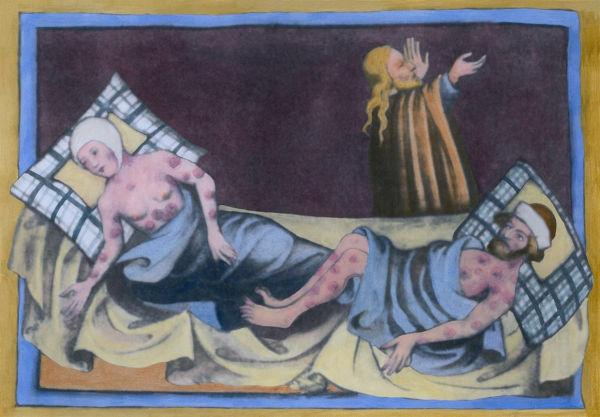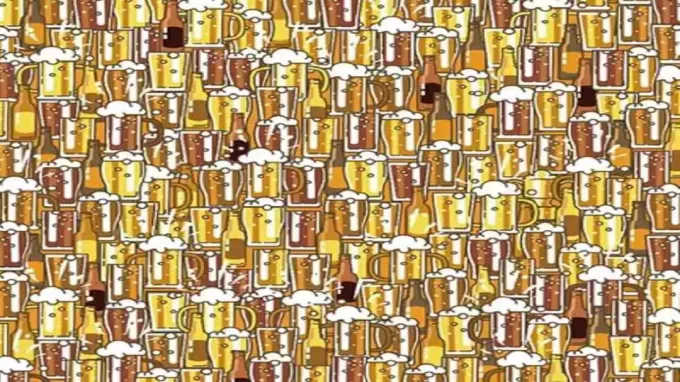THE Middle Ages is the name of the period of history located between the years 476 and 1453. The name "Middle Ages" is used by historians within a period that encompasses four ages: Old, Average, Modern and contemporary. When we refer to the Middle Ages, we generally refer to matters relating, directly or indirectly, to Europe.
The Middle Ages began with the disintegration of the Western Roman Empire, in the fifth century. This started a process of mix of latin culture, from the Romans, and of the Germanic culture, from the peoples who invaded and settled in the lands that belonged to Rome, in Western Europe.
From this period, the ruralization process that Europe lived between the 5th and 10th centuries stands out; the strengthening of the Catholic Church; the structuring of the feudal system, not only economically but also politically and socially. From the 11th century onwards, the urban and commercial renaissance paved the way for the 14th century crisis, which determines the end of the Middle Ages.
Accessalso: Scholasticism: an important philosophical current of the Middle Ages
When did the Middle Ages begin and when did it end?
As mentioned, the Middle Ages are so called within a period, stipulated by historians, which determines it between the years 476 and 1453. What stipulates the beginning of the Middle Ages is the removal of Rômulo Augusto of the Roman throne, in 476, and what stipulates its end is the conquest of Constantinople by the ottomans, in 1453.
The Middle Ages are divided by historians into two major phases, which are:
High Middle Ages: 5th to 10th century;
low middle age: 11th to 15th century.
During the High Middle Ages, Europe was going through the transformations resulting from the disintegration of the Roman Empire and the feudalism was in training. THE low middle age it was the height of feudalism and in which Europe began to undergo transformations arising from the urban and commercial renaissance.
Why the name “Middle Ages”?

The name Middle Ages, used to refer to this period between 476 and 1453, was an invention of the renaissance. One of the first mentions of this period as “average time”, according to historian Hilário Franco Júnior, dates back to the Italian bishop Giovanni Andrea|1|. This idea became popular in the 16th century, during the Rebirth.
The meaning behind this nomenclature was pejorative, since, in the view of the Renaissance, the Middle Ages would have been a time marked by the interruption of the classical tradition, that is, Greco-Roman. From this perspective, this tradition was being resumed in their time, which is why they called their own period of “rebirth”.
Accessalso: The history of Jerusalem, holy city for medieval Christians
They believed they were experiencing a moment of intellectual, scientific and artistic rebirth. This leads us to conclude that, in the Renaissance perspective, the Middle Ages was a bad period, of delay and interruption in human progress. Other groups, according to their interests, critiqued this Age, always calling it “ignorant”.
This negative view caused many to call it the “Dark Ages”, a negative term and rejected by historians. The first mention of the Middle Ages in this way goes back to Francesco Petrarch, who, in the 16th century, already called it “tenebrae”.
Feudalism
Feudalism is the term we use for every social organization, politics, cultural, ideologicalandeconomical that existed in Europe during the Middle Ages. This concept explains the structuring of Western European society, and the organization it represents existed, in its classical form, between the eleventh and thirteenth centuries, approximately.
From the 5th to the 10th century, feudalism was in structuring process, once the political relations characteristic of vassalage were being formed, the power of the Catholic Church was gradually established, and the ruralization and feudalization of Europe developed.
From the 11th to the 13th century, feudalism was at its height, especially in the regions that today correspond to Germany, France, and northern Italy and England. From the 14th century onwards, Ofeudal systemdecays, as Europe urbanized and commerce gained importance.
![In feudalism, castles were an important center of power, as the feudal lords lived in them. [1]](/f/96811cac64517dad95d4191728f71258.jpg)
In the economic aspect, we can say that feudalism was a system based on Agricultural production and on servile exploitation of the peasants. With the end of the Roman Empire, Western Europe became rural and impoverished people began to settle in the vicinity of large rural properties, in search of food and protection. From this situation was created the relationship of dependence between the feudal lord and the peasant.
O feudal lord, owner of the lands, allowed the peasant to stay on them, as long as he cultivated them and delivered part of what had been produced to him. O farmer he was subject to a series of tributes to be paid to feudal lords, such as the corvee, a carving and the banality. The feudal lord, in turn, had the obligation to protect those installed on his property.
In the religious sphere, the Catholic church had a great influence, since its power reached decisions of the secular power. The Church also elaborated the ideological construction that justified the inequalities of the feudal world. In the vision stipulated by her, and embraced by the nobility, the servants fulfilled their role by a divine appointment.

feudal society was status, that is, divided into classes with very well defined functions, and in which social ascension was quite difficult. There were three major social classes in it:
Nobility (bellators): privileged class, holder of land, whose function, within the medieval ideology, was to protect society;
Clergy (orators): members of the Catholic Church who fulfilled religious functions. It was also a privileged class, since the Church held wealth, power and land;
peasants (laboratories): impoverished group that supported feudal society through their work and the high taxes they paid.
In the political aspect, the vassalage it was one of the great manifestations of feudalism. This structure emerged around the 8th century and established the power relations between the king and nobles of each kingdom.
Through vassalage, the king (overlord) and the nobles (vassals) make an agreement establishing bonds of loyalty among themselves. The vassals received a fief (land) and had the obligation to assist their lord in the execution of justice, at kingdom administration and on war, if necessary.
Main events
The Middle Ages were very long and, logically, impacted by different events important to human history. The Middle Ages itself is the fruit of the end of the Western Roman Empire, after which a series of Germanic kingdoms established themselves in Western Europe.
The most symbolic case was that of the francs, a Germanic people who settled in Gaul and formed a kingdom ruled, first, by the Merovingians and then by the Carolingians. These were the first great dynasty to rule a kingdom in Europe, and through Charlemagne, their main king, formed an empire with a quite vast territory.
The emergence of Islam the seventh century marked a break between the West and the East, especially when the Muslims conquered the Iberian Peninsula. The Muslim advance in Europe was only stopped by Carlos Martel, in 732. Centuries later, the Catholic Church found in the war against Muslims a way to extend its wealth to the East.

At Crusades they took place from the 11th to the 12th century and mobilized Christian troops against Muslims in Palestine and North Africa. In all, there were nine crusades, being the first of them summoned by the Pope Urban II, in 1095. The Ninth Crusade ended in 1272, and the Christians' initial goal (conquering Jerusalem) was not achieved.
Other highlights that can be made about the Middle Ages are the Byzantine Empireand the establishment of Inquisition. Also relevant subjects are medieval culture and science, generally understudied.
Accessalso: The Cathars - learn how the Church treated this group considered heretical
End of Middle Ages
The end of the Middle Ages is related to the urban and commercial renaissance that Europe experienced from the eleventh century. New agricultural techniques they allowed an increase in food production, generating a surplus that could be sold. The increase in food production guaranteed an increase in population, but also in trade and, consequently, in the circulation of currency.
With the population increase, the number of people moving to the cities increased and the number of merchants around them also. The thirteenth century intensifies this process of rural exodus, because the bad agricultural productions made many seek to survive in the cities.

The 14th century is when historians stipulate the final frontier of the Middle Ages. It is a century of crisis, characterized by wars that caused destruction and generated more hunger, and this resulted in the plague. The 14th century is marked by the famous Black Plague — outbreak of bubonic plague responsible for death of 1/3 of the European population throughout that period.
Hunger generated great peasant revolts, especially from the 13th century, and urban growth put an end to feudal isolation. Revolts also took place in big cities, mainly due to the lack of jobs. New structures of power began to emerge, the political organization of the kingdoms changed and, thus, the national states.
The weakening of feudalism and the strengthening of trade resulted in the mercantilism. When Constantinople falls and trade with the East closes, Europe turns to the West. THE Atlantic Ocean exploration opened new frontiers and consolidated the end of the Middle Ages.
Grades
|1| JUNIOR, Hilário Franco. the Middle Ages: birth of the West. São Paulo: Brasiliense, 2006, p. 11.
Image credit
[1] lucamate and Shutterstock
By Daniel Neves
History teacher

